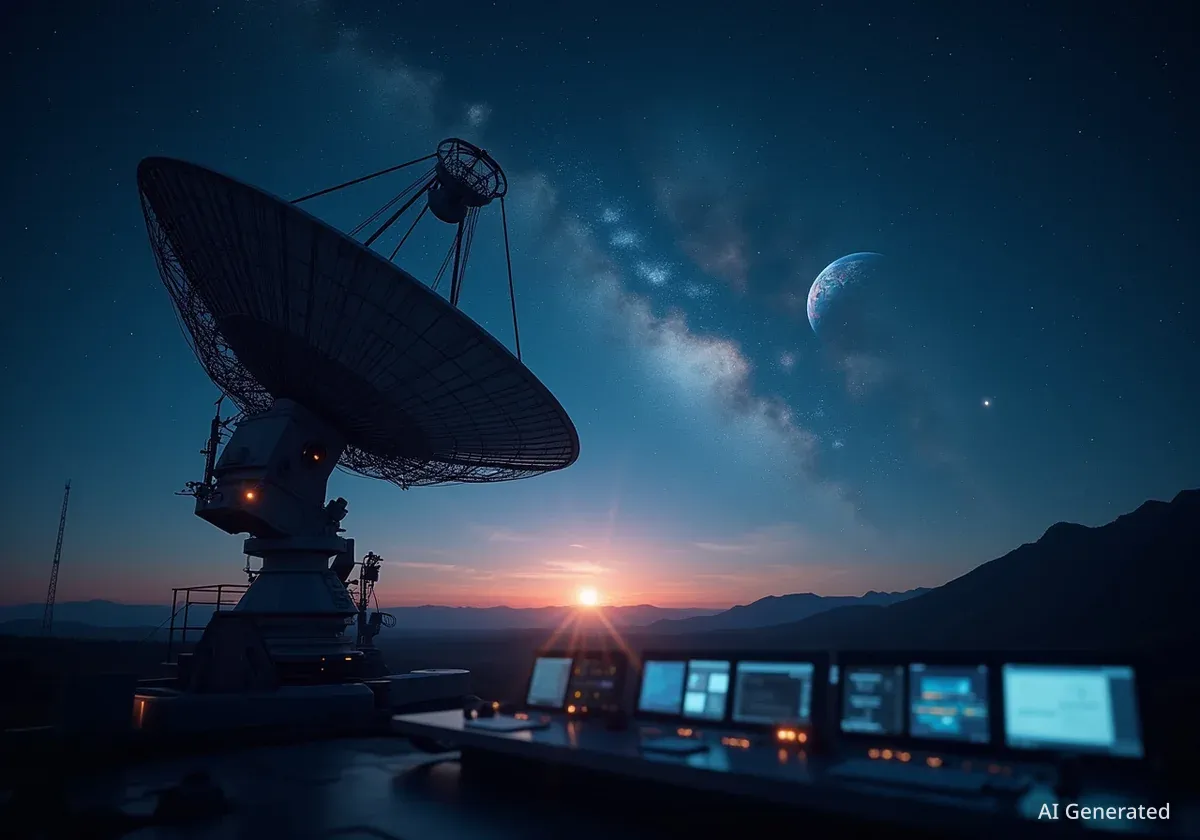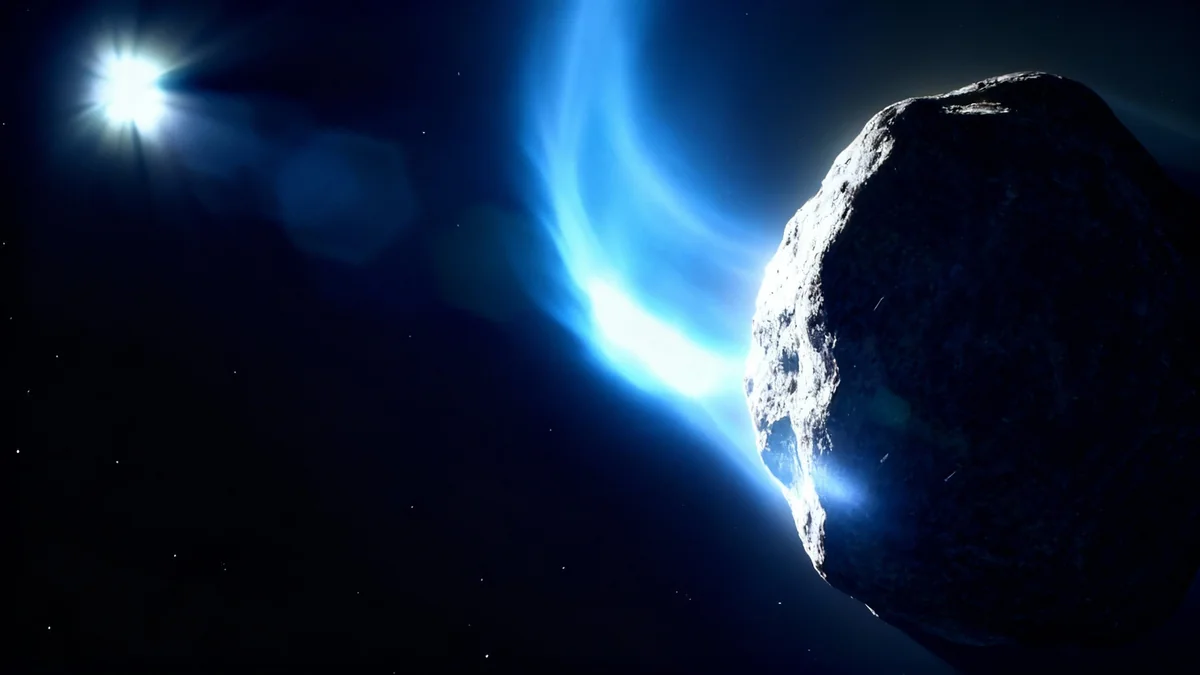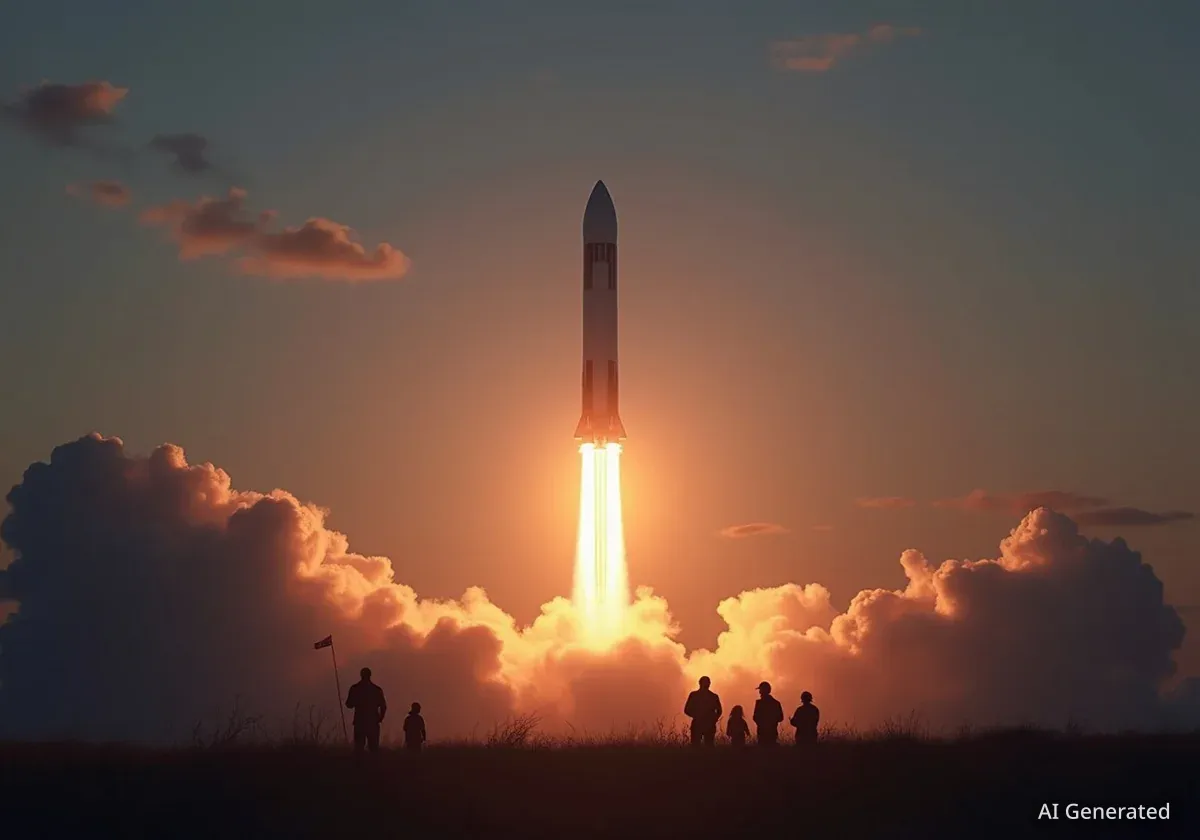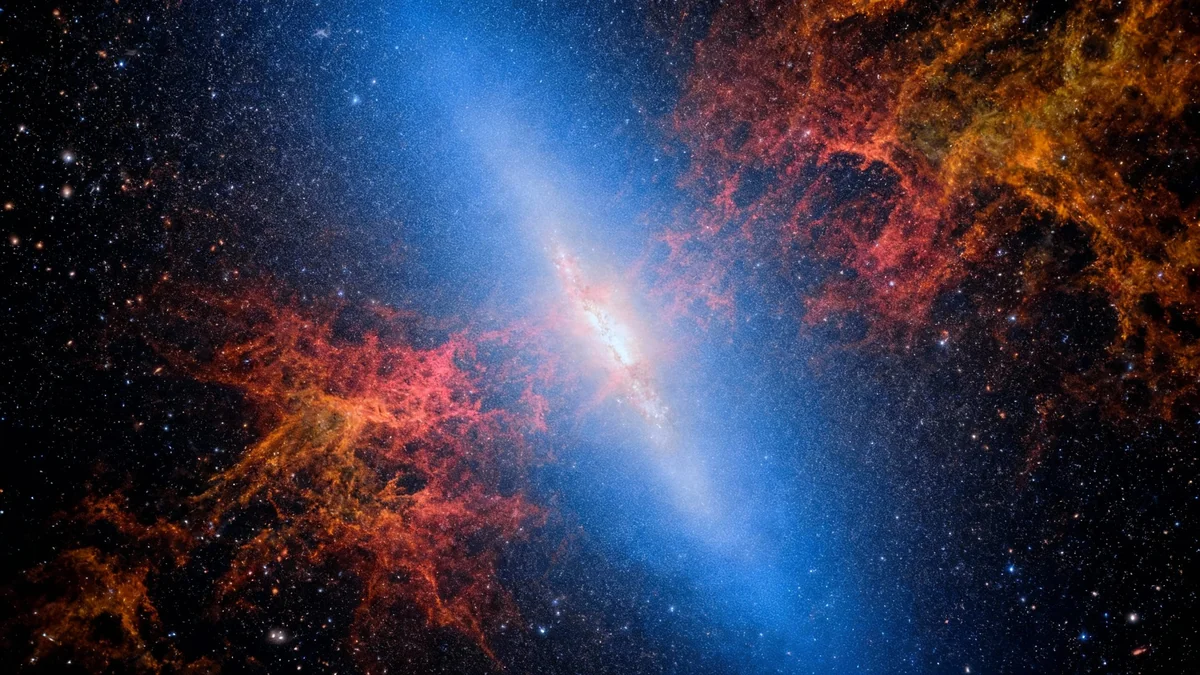The new CCOR-1 instrument aboard the GOES-19 satellite is providing unprecedented views for space weather forecasting, but its unique geostationary orbit presents new challenges. Positioned much closer to Earth than previous instruments of its kind, CCOR-1 is capturing unusual images, including the Moon's looping path and even the glow of city lights, while also dealing with interference from sunlight reflected off our own planet.
Key Takeaways
- The CCOR-1 is the first operational coronagraph placed in a geostationary orbit around Earth, a new strategy for monitoring space weather.
- Its proximity to Earth results in observational interference from reflected sunlight, a phenomenon known as "Earthshine."
- The instrument is sensitive enough to detect the Moon, planets, and even nighttime city lights on Earth when the Sun is blocked.
- Scientists are actively developing methods to mitigate the effects of Earthshine to ensure data accuracy for space weather forecasting.
A New Vantage Point for Space Weather
The Compact Coronagraph-1 (CCOR-1) on the GOES-19 satellite marks a significant shift in how scientists monitor the Sun. It is the first operational coronagraph dedicated to space weather forecasting to be placed in geostationary orbit, flying alongside the satellite approximately 35,786 kilometers (22,236 miles) above the Earth.
This position is fundamentally different from previous solar observation missions. Historically, coronagraphs have been stationed at the Lagrange-1 (L1) point, a gravitationally stable location 1.5 million kilometers (about 932,000 miles) from Earth toward the Sun. This distant vantage point provides a clear, uninterrupted view of the Sun's corona.
What is a Coronagraph?
A coronagraph is a specialized telescopic instrument designed to block the direct light from a star, such as our Sun. By creating an artificial eclipse with an internal disk, it allows scientists to observe the much fainter outer atmosphere of the star, known as the corona. This is crucial for tracking solar flares and coronal mass ejections (CMEs) that can impact Earth.
While the L1 point is ideal for clarity, the geostationary orbit of GOES-19 offers other advantages, including constant communication and data transmission. However, being nestled deep within the Earth-Moon system introduces a new set of observational variables that scientists must now account for.
The Challenge of Earthshine
One of the most significant consequences of CCOR-1's proximity to Earth is a phenomenon called Earthshine. This occurs when sunlight reflects off the Earth's surface and atmosphere—from clouds, oceans, snow, and ice—and shines onto the instrument. This reflected light can interfere with the subtle observations of the Sun's corona.
The impact of Earthshine is not constant. It primarily affects CCOR-1's data during the sunrise hours from the satellite's perspective. The intensity of this interference also follows a seasonal pattern.
According to mission specialists, the effects are most pronounced around the equinoxes in March and September. During these periods, the geometric alignment between the Sun, Earth, and the satellite maximizes the amount of reflected light entering the instrument. The effect gradually lessens as the Earth moves toward the solstices in June and December.
"Mitigating Earthshine is a top priority for the science team. By understanding its patterns, we can develop algorithms to filter out this noise and preserve the integrity of the space weather data. It's a unique challenge that comes with this groundbreaking orbital position," a project scientist explained.
Unexpected Sights in the Coronagraph's View
The geostationary orbit of CCOR-1 brings other celestial bodies into its field of view in unusual ways. Since the instrument is well within the Moon's orbit, our natural satellite makes frequent appearances in the imagery. The combined orbital motion of GOES-19 and the Moon creates an interesting optical effect, making the Moon appear to follow a curved or even looping path across the sensor.
Furthermore, CCOR-1's sensitivity has revealed another fascinating detail. During periods around the equinoxes, the Earth itself can pass directly in front of the Sun, blocking it from the instrument's view. In the processed "difference images," which highlight changes between frames, CCOR-1 is sensitive enough to detect the faint glow of nighttime city lights on the planet below.
A Sensitive Eye in Space
The ability to detect city lights, which are incredibly faint compared to the Sun's corona, demonstrates the high sensitivity of the CCOR-1 instrument. This capability underscores the need to correct for all sources of light, whether from Earth or distant celestial objects, to isolate the solar data accurately.
Of course, CCOR-1 also captures more conventional astronomical objects. Viewers of its data stream can expect to see:
- Planets from our solar system passing through the field of view.
- Occasional comets as they journey closer to the Sun.
- Other satellites sharing the busy geostationary orbit.
- Potentially, small pieces of space debris that happen to pass by.
Understanding and Correcting the Data
Like any complex scientific instrument, CCOR-1 has inherent characteristics that scientists must account for. The imagery sometimes shows static or fixed artifacts that are part of the instrument itself. One such feature is a dark "collar" that appears around the base of the occulting disk, which is most visible when the background is bright, such as during a significant solar event.
The ongoing work for the science and engineering teams involves cataloging all these effects—from Earthshine to instrument artifacts—to create a clean, reliable data product. By characterizing these unique features, they can be computationally removed from the final images used by space weather forecasters.
This meticulous calibration process is essential. The data from CCOR-1 will play a vital role in protecting satellites, power grids, and astronaut safety from the harmful effects of solar storms. Its novel location, while presenting challenges, ultimately provides a new and constant stream of information to improve our ability to predict and prepare for space weather events.





